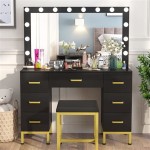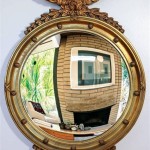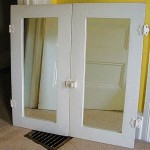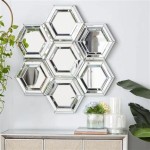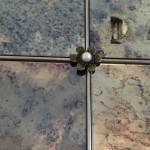Can You Mosaic On Mirror: A Comprehensive Guide
The art of mosaic, characterized by the creation of images from an assemblage of small pieces of colored glass, stone, or other materials, has a rich and enduring history. This technique has been applied to a variety of surfaces, from floors and walls to furniture and artwork. A question that frequently arises is whether mirrors, specifically, are suitable candidates for mosaic application. The answer is affirmative, but it necessitates careful consideration of materials, techniques, and potential challenges to ensure a successful and aesthetically pleasing result.
The suitability of a mirror surface for mosaic work hinges on several factors, including the type of adhesive used, the nature of the tesserae (the individual mosaic pieces), and the preparation of the mirror surface. Understanding these factors is crucial for achieving a durable and visually appealing mosaic project. Furthermore, the intended use of the mirrored mosaic will influence the choice of materials and methods employed.
Understanding the Compatibility of Materials
The primary challenge in creating a mosaic on a mirror lies in the different expansion and contraction rates of the mirror glass and the tesserae. Fluctuations in temperature and humidity can cause these materials to expand and contract at varying rates, potentially leading to cracking or detachment of the mosaic pieces over time. Therefore, selecting materials with similar expansion and contraction coefficients is paramount. Glass tesserae are often a preferred choice for mirror mosaics due to their inherent compatibility with the glass surface. However, other materials, such as ceramic or stone, can also be used provided that the adhesive is flexible enough to accommodate any differential movement.
The selection of an appropriate adhesive is equally critical. A flexible adhesive designed for glass-to-glass bonding is essential. These adhesives often contain polymers that allow for slight movement without compromising the bond strength. Avoid using rigid adhesives like epoxy resins, as they are more prone to cracking and detachment under stress. Consider using a mosaic adhesive specifically formulated for glass and mirror applications. These adhesives typically offer excellent adhesion, water resistance, and flexibility.
Preparing the mirror surface is another vital step. While mirrors appear smooth and clean, they often have a thin layer of residue or manufacturing oils that can impede adhesion. Cleaning the mirror surface thoroughly with a glass cleaner, followed by wiping it down with isopropyl alcohol, is recommended. Some mosaic artists also lightly score the surface of the mirror with fine-grit sandpaper to create a slightly textured surface that enhances the grip of the adhesive. However, this must be done with extreme caution to avoid damaging the reflective backing of the mirror.
Techniques for Applying Mosaic to Mirror
Applying a mosaic to a mirror involves a process similar to that used for other surfaces, but with certain modifications to account for the reflective nature of the substrate. The first step is to plan the design. This can involve sketching the design directly onto the mirror surface using a water-soluble marker or tracing a pre-existing pattern onto transfer paper. The design should be relatively simple, especially for beginners, and should consider the size and shape of the tesserae to be used.
The tesserae should be applied one at a time, using a small amount of adhesive on the back of each piece. Press the tesserae firmly onto the mirror surface, ensuring good contact with the adhesive. Maintain consistent spacing between the tesserae to create a uniform grout line. The spacing will influence the overall aesthetic of the mosaic. Wider grout lines tend to create a more rustic or textured look, while narrower grout lines result in a more refined and seamless appearance.
For intricate designs, it may be necessary to cut or shape the tesserae. This can be accomplished using specialized mosaic nippers or tile cutters. Safety goggles should always be worn when cutting tesserae to protect the eyes from flying chips. After the adhesive has dried completely, typically after 24 to 48 hours, the mosaic can be grouted. The grout fills the spaces between the tesserae and helps to secure them in place. Select a grout color that complements the tesserae and the overall design. Apply the grout evenly over the mosaic surface, pressing it into the grout lines. Then, use a damp sponge to remove the excess grout from the surface of the tesserae. Multiple passes with the sponge may be needed to achieve a clean and polished finish.
Addressing Potential Challenges and Considerations
Several potential challenges can arise when creating a mosaic on a mirror. One common issue is the formation of air bubbles under the tesserae. This can be prevented by using a thin, even layer of adhesive and pressing the tesserae firmly onto the mirror surface. Another challenge is achieving a uniform grout line. Inconsistent spacing between the tesserae can result in uneven grout lines, which can detract from the overall appearance of the mosaic. Carefully measuring and placing the tesserae during the application process can help to minimize this problem.
The reflective surface of the mirror can also make it difficult to assess the alignment and spacing of the tesserae during the application process. Working in a well-lit area and using a magnifying glass can help to improve visibility. It's also crucial to be mindful of the potential for scratching the mirror surface during the mosaic process. Using soft tools and avoiding abrasive cleaners can help to prevent scratches.
Another important consideration is the intended use of the mirrored mosaic. If the mosaic is intended for outdoor use, it is essential to use materials and adhesives that are resistant to water, UV radiation, and temperature fluctuations. Sealing the mosaic with a waterproof sealant can also help to protect it from the elements. If the mosaic is intended for use in a bathroom or other humid environment, it is crucial to use materials and adhesives that are resistant to mold and mildew.
When working with mirrored surfaces, safety is paramount. Always wear safety goggles when cutting or breaking tesserae. Work in a well-ventilated area when using adhesives and sealants. Dispose of broken glass and sharp objects properly to prevent injuries. By carefully considering these challenges and taking appropriate precautions, one can create a beautiful and durable mosaic on a mirror surface.
The choice of materials greatly influences the final product. For a contemporary look, consider using iridescent or dichroic glass tesserae, which reflect light in a variety of colors. For a more traditional look, opt for natural stone tesserae or ceramic tiles. The size and shape of the tesserae can also have a significant impact on the overall aesthetic. Smaller tesserae allow for more intricate designs and finer details, while larger tesserae create a bolder and more graphic look.

How To Mosaic Tile A Mirror Caffeine And Cabernet

How To Mosaic Tile A Mirror Caffeine And Cabernet

Learn How To Create Beautiful Mosaics With Craft Tiles The Mosaic Blog Tagged Beginners Mirror

Mirror Mosaic Warning How To Blog

How To Mosaic Tile A Mirror Caffeine And Cabernet

Easy Mirror Mosaic Art How To Paste At Home Step By Tutorial For Beginners

Diy Mosaic Tile Bathroom Mirror Centsational Style

Making A Mosaic How To Make Wall Mirror Decorating On Cut Out Keep

This Site Tells You All About How To Use Ink Can Make Mirror With On Glass Tiles Glued A Frame

How To Mosaic A Mirror For Kiddies Bathroom Diy Blog

